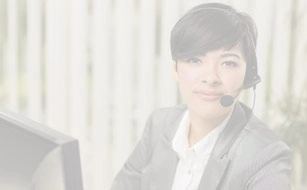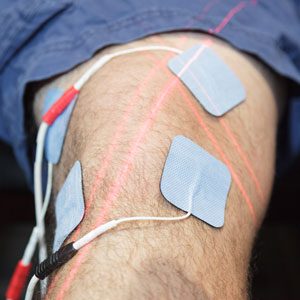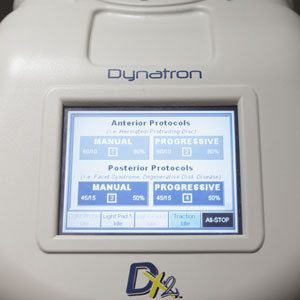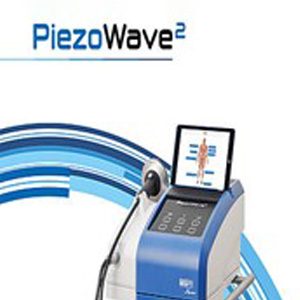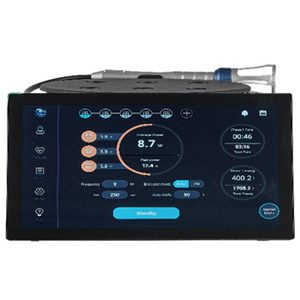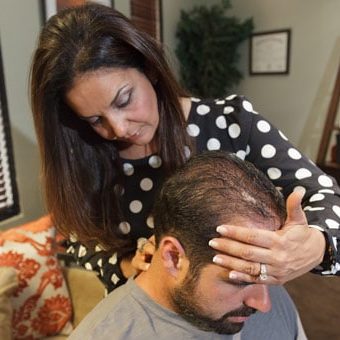Disc Pain
WHAT CAUSES DISC PAIN?
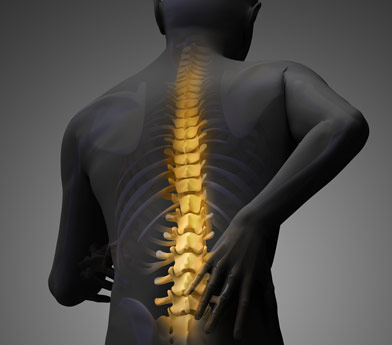
A DISC DOESN'T "SLIP"
Since spinal discs have a very poor blood supply, they also depend upon the circulation of joint fluids to bring in nutrients and expel waste. If a spinal joint loses its normal motion and this pumping action is impaired, the health of the disc deteriorates. Like a wet sponge, a healthy disc is flexible. A dry sponge is hard, stiff, and can crack easily. This is how disc pain begins in East Providence RI, Pawtucket RI, Providence RI, or Central Falls RI.
Contrary to popular belief, a disc cannot "slip" out of place. The reason for this is that each disc is attached to the vertebra above and below it.
TRAUMA OR INJURY TO THE SPINE CAN CAUSE DISCS TO:
- Bulge
- Herniate
- Tear
- Prolapse
- Desiccate
- Rupture
- Extrude
This can be quite painful, putting pressure on the spinal cord and nerve roots, often interfering with their function.
The chiropractic approach to disc pain is to help restore better motion and position to the spinal joints. Besides reducing disc bulging, better spinal function helps decrease inflammation so the slow process of healing the surrounding tissues can begin.
While results cannot be guaranteed, many patients have avoided needless surgery or a dependency on pain pills by choosing conservative chiropractic care.
TYPES OF DISC PAIN
DISC TEAR
The most common disc injury is a small crack or micro tear in the tough, outer cartilage material of the disc called annular fibers. This allows the fluid to start leaking out, and the disc begins to wear thin. A disc tear can cause pain that is felt directly in the affected disc. This happens when the nucleus pushes into the damaged annulus and comes in contact with the vertebral nerves. Once the nucleus pushes through the disc tear and begins to apply pressure on other nerves and surrounding tissue, symptoms of a pinched nerve, sciatica, or spinal stenosis may begin to show. A disc tear is caused by trauma to the intervertebral disc. Wear and tear on the annulus of the disc will determine the amount of force that would be required to tear it. Age is one of the major contributors in the weakening of the annulus while repetitive strain to it will cause it to degenerate quicker. Genetics may also play a role as some people will be born with a naturally weaker annulus.
BULGING DISC
The soft jelly-like material in the middle of the disc pushes to one side, forward or backward, and swelling occurs. The nucleus is still contained within the tough outer fibers of the disc, but can still cause pressure and painful symptoms. A bulging disk occurs when the disk shifts out of its normal radius and most often occurs simply as a result of age.
A bulging disk is different from a herniated disk in that a bulging disk typically occurs gradually over time rather than suddenly. A herniated disk is often the result of an injury or trauma to the spine. In the majority of patients who experience a bulging disk, there is no pain unless the disk becomes herniated or protrudes into a nerve. In many cases, a bulging disk may be diagnosed as a condition secondary to another problem. Because a bulging disk does not always cause pain, it may only be found during a routine or diagnostic imaging test such as magnetic resonance imaging (MRI). Typically, a bulging disk is not a problem unless it begins to cause pain or becomes herniated or ruptures.
Treatment for a bulging disk or even a herniated disk is relatively conservative in most cases:
- Rest and lifting restrictions are common practices when dealing with a bulging disk.
- Chiropractic care is also recommended to relieve pain and the symptoms.
Though usually a condition affecting the lower back, occasionally, a bulging disk may occur in the neck area usually, pain that radiates to the shoulders and arms indicates that a nerve in the neck may be pinched or pushed upon. In the lower back, pain may sometimes radiate to the legs.
HERNIATED DISC
The bones (vertebrae) that form the spine in your back are cushioned by small, spongy discs. When these discs are healthy, they act as shock absorbers for the spine and keep the spine flexible. When a disc is damaged, it may bulge or break open, this is called a herniated disc. It may also be called a slipped or ruptured disc.
You can have a herniated disc in any part of your spine, but most herniated discs affect the lower back (lumbar spine). Some happen in the neck (cervical spine) and more rarely, in the upper back (thoracic spine). When a herniated disc presses on nerve roots, it can cause pain, numbness, and weakness in the area of the body where the nerve travels. A herniated disc in the lower back can cause pain and numbness in the buttock and down the leg. This is called sciatica. Sciatica is the most common symptom of a herniated disc in the low back. For more information on sciatica, click here.
PROLAPSED DISC
A piece of disc material separates away and becomes a fragment or a free-floating piece. A prolapsed disc may also be called a slipped disc.
The spine has special cushioning between each vertebra, and these are called discs. Discs have a soft center called the nucleus pulpous, and then a harder outer ring. Sometimes, that soft center breaks through the outer ring and extrudes out, which can put pressure on other structures in the spine like the nerves.
Depending on which disc has "slipped," pain may be felt in numerous places. It can result in low back pain, and many prolapsed discs do occur in the lower back. People might also note pain in one or both legs. Pain felt can vary in severity and some people may not even be aware they have a prolapsed disc.
Some forms of movement exacerbate discomfort, while lying down may ease it. This is certainly a condition that requires our care. One rare complication may occur, called cauda equina syndrome, which includes severe pain and inability to urinate or have bowel movements. The area around the rectum may feel numb. This is a medical emergency and needs immediate attention because permanent damage to the nerves feeding these areas can result without medical intervention.
Only about 10% of people will require extreme measures like surgery to treat a prolapsed disc. In many cases, the area of prolapse shrinks and improves within a few weeks after symptoms are first noted, and pain is not significant enough to consider surgery.
DISC EXTRUSION
A disc wall finally develops a tear when it's under a large amount of pressure, and the inner disc material extrudes into the spinal canal, possibly exerting pressure on nearby spinal nerve roots or the spinal cord.
DESICCATED DISC
The disc loses its fluid content and degenerates down to a rough, worn-down, or worn-out appearance. This occurs as the bones begin to fuse with each other.
WHAT IS DISC DESICCATION?
Between every two vertebrae (the bones of your spinal column) there is a flat jelly-like disc that acts as a cushion and great shock absorber. A disc desiccation is the result of the loss of fluid or dryness of the discs.
Cause of Disc Desiccation
The main cause of disc desiccation is the natural aging process. As we get older it is only normal that a part of the fluid from our discs goes away. Most people experience some degree of disc desiccation during their lifetime. The majority of patients suffering from disc desiccation are 60 years of age and older.
Another cause of disc desiccation is repeated strains or injuries to the same spinal area as well as trauma. This is when the condition typically occurs in younger people. It is very important to take disc desiccation seriously and seek treatment as soon as you find out about it!
CHIROPRACTIC APPROACH
There are a number of things you can do to alleviate the pain related to disc problems and restore normal movement. Each individual problem requires a course of treatment that may need consultation with your doctors, our doctors, and an individualized plan.
- Decompression: Decompression therapy provides static, intermittent, and cycling distraction forces to relieve pressures on structures that may cause pain.
- Spinal Manipulation: The purpose of manipulation is to restore joint mobility by manually applying a controlled force into joints that have become hypomobile or restricted in their movement as a result of a tissue injury - to restore mobility, thereby alleviating pain and muscle tightness, and allowing tissues to heal.
- Shockwave & Myofascial Acoustic Compression Therapy (MyAct): Shockwave and Myofascial Acoustic Compression Therapy (MyAct) with the aptitude to pinpoint the pain and treat it at the source. Myofascial Acoustic Compression Therapy (MyAct) is widely used in the treatment of acute and chronic pain in muscles, tendons, and joints. MyAct describes the use of acoustic waves to target tissue at varying depths to compress and manipulate tissue resulting in a focused and precise deep-tissue treatment.
- Massage Therapy: Massage therapy takes some pressure away from the affected area and helps relax the concerned muscles.
- Physiotherapy: By using regular targeted exercises for stretching and strengthening, as well as ice & heat therapies you help increase the flexibility in your body.
- Weight Loss: If you are overweight there is a good chance that by losing some of the weight, you will take some of the pressure away from the affected disc. The best way to do this is by following a healthy diet combined with daily exercise, but be careful as some sports may aggravate your back even more.
- Chiropractic Therapy: As mentioned previously, chiropractic care treats a wide variety of injuries and ailments; each individual plan of care is designed specifically for the patient's needs.
- Epidural Steroid Injection: Epidural steroid injections are typically administered to patients with chronic pain due to disc herniation, degenerative disc disease, and spinal stenosis.
- Surgery: Surgery should only be considered if you experience severe pain and have already tried all other treatments. Think twice before you expose yourself to the risks of surgery and also make sure you seek several medical opinions.
Talk to the doctors at DeCrescenzo Chiropractic about the treatment options that come into consideration for you and your specific problem.
Involved in a motor vehicle or work-related accident?
We will work with your insurance company and/or attorney to get you the care you need.
Call us at (401) 435-2002
INJURED IN A CAR ACCIDENT?
Most people only think about their automobile in an accident. Make sure you are truly "O.K." before you settle your case! Learn more...
HURT AT WORK?
It's important to understand that chiropractic care is covered by worker's compensation insurance, and is effective and cost-efficient. Learn more...
TREATMENTS WE OFFER
Learn more about the cutting-edge procedures used in our offices:
CONTACT US

